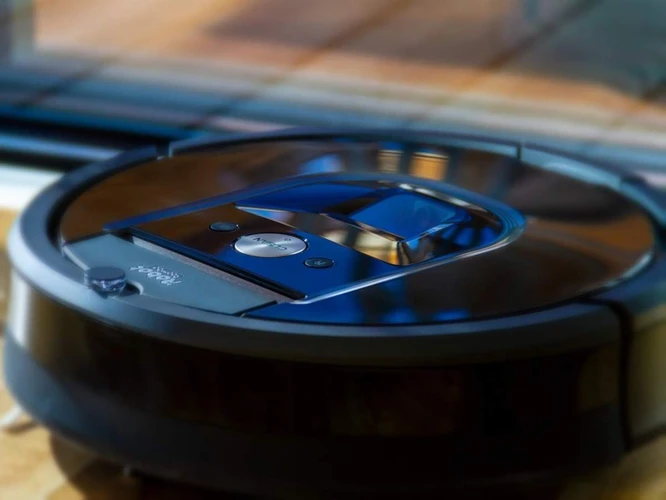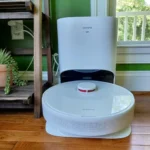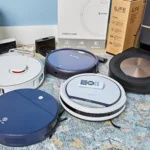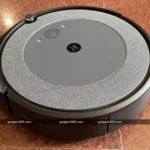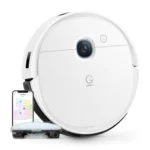Picture this: you’re eagerly awaiting the arrival of your shiny new smart vacuum cleaner, excited to see how it can simplify your household chores. But as you begin your first cleaning session, you notice something alarming – the dustbin capacity is minuscule and requires frequent emptying. Suddenly, the convenience of a smart vacuum seems diminished by the hassle of constantly monitoring and emptying the dustbin. This realization leads to the pressing question – why does dustbin capacity matter for smart vacuum cleaners? In this article, we will explore the importance of dustbin capacity and how it can affect your cleaning sessions. So grab a cup of coffee, sit back, and let’s dive into the world of smart vacuum cleaners.
The Importance of Dustbin Capacity
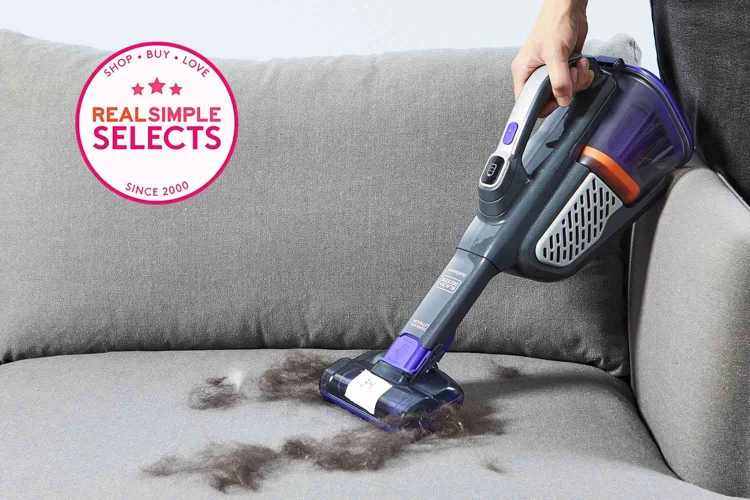
As we delve into the world of smart vacuum cleaners, one feature that cannot be overlooked is the dustbin capacity. It is a critical aspect that affects the cleaning ability and efficiency of the vacuum cleaner. Understanding the importance of dustbin capacity could help you choose the right smart vacuum for your needs. In this section, we will discuss what dustbin capacity is, its significance, and how it affects your cleaning sessions. We will also look into factors that affect dustbin capacity and ways to maximize it. So, keep reading to gain insights into one of the essential features of a smart vacuum cleaner.
If you want to learn about other important factors to consider before buying a smart vacuum cleaner, check out our comprehensive smart vacuum cleaner guide.
What is Dustbin Capacity?
Dustbin capacity can be defined as the amount of space available in the dustbin of a vacuum cleaner to collect dirt and debris during the cleaning process. It is an important factor to consider when choosing a smart vacuum cleaner as it affects the cleaning performance and convenience of the device.
The dustbin capacity can range from 0.3 liters to 1.5 liters or more depending on the size and type of the vacuum cleaner. A mini and lightweight robot vacuum cleaner usually has a smaller dustbin capacity, while a full-sized smart vacuum cleaner has a larger dustbin capacity. In general, the larger the dustbin capacity, the longer the cleaning session you can expect from the device.
There are several types of dustbin designs available in the market, such as the bagged and bagless options. Bagged vacuum cleaners collect dirt and dust in replaceable bags that are disposed of after use, while bagless models have dustbins that can be emptied and reused multiple times.
When selecting a smart vacuum cleaner, it is important to consider the type of dustbin capacity that is best suited for your cleaning needs. Factors such as the frequency and duration of cleaning sessions, the size of your living space, the type of debris, and the number of occupants in the house can affect the choice of dustbin capacity.
To learn more about other factors to consider when choosing a smart vacuum cleaner, check out our related articles such as “Choosing the Right Suction Power for Your Smart Vacuum”, “Factors to Consider When Choosing the Battery for Your Smart Vacuum”, and “The Importance of Mapping Technology in Smart Vacuum Cleaners.”
Why is Dustbin Capacity Important?
Dustbin capacity is an essential feature to consider when purchasing a smart vacuum cleaner. The importance of dustbin capacity lies in the fact that it directly affects the performance and efficiency of the device. A larger dustbin capacity means the vacuum cleaner can pick up more dirt and debris per cleaning session, which ultimately reduces the need for frequent dustbin emptying.
To understand the importance of dustbin capacity better, let’s take a look at the comparison table below:
| Small Dustbin Capacity | Large Dustbin Capacity | |
|---|---|---|
| Advantages | – Lightweight – Compact size |
– Picks up more dirt and debris – Minimizes the need for frequent emptying – Efficient for large cleaning areas |
| Disadvantages | – Requires more frequent emptying – Not ideal for large cleaning areas |
– Heavy and bulky – Takes up more storage space |
As shown in the table, a small dustbin capacity is ideal for those who have limited storage space and small cleaning areas. On the other hand, a large dustbin capacity is perfect for those who have large cleaning areas and prefer to empty the dustbin less frequently.
The type of dirt and debris also plays a crucial part in determining the dustbin capacity. For instance, pet owners need to consider a vacuum cleaner with a large dustbin capacity as pet hair and dander tend to occupy more space.
The dustbin capacity of a smart vacuum cleaner is an essential factor to consider while selecting an appropriate device. It affects the efficiency, performance, and overall user experience of the device. It is essential to choose a vacuum cleaner with an appropriate dustbin capacity as per the user requirements.
How Dustbin Capacity Affects Cleaning Sessions?
When it comes to smart vacuum cleaners, dustbin capacity is an important factor to consider. The dustbin is where all the dirt, debris, and pet hair collected during the cleaning session are stored. The larger the dustbin capacity, the cleaner your home can be without having to empty the bin in the middle of a cleaning session.
Here is a table that shows how dustbin capacity affects cleaning sessions:
| Amount of Dustbin Capacity | How It Affects Cleaning Sessions |
|---|---|
| Small dustbin capacity | Requires frequent emptying, which can interrupt the cleaning process and make it less efficient. |
| Large dustbin capacity | Allows for longer cleaning sessions without requiring you to empty the bin, which saves time and makes the cleaning process more efficient. |
As you can see from the table, small dustbin capacity can cause interruptions during cleaning sessions since you need to stop and empty the bin more frequently. This can be especially problematic if you have a large home or if you’re cleaning up after pets that shed a lot of hair. On the other hand, large dustbin capacity enables you to have longer cleaning sessions without the need for frequent emptying, which saves time and energy.
It’s essential to note that finding the perfect dustbin capacity for your needs requires considering many factors. These include the size and weight of your vacuum cleaner, the type of dirt and debris in your home, and how often you clean your home.
If you are interested in more information about smart vacuum cleaners, check out our article on the benefits of HEPA filters in smart vacuums.
Small Dustbin Capacity
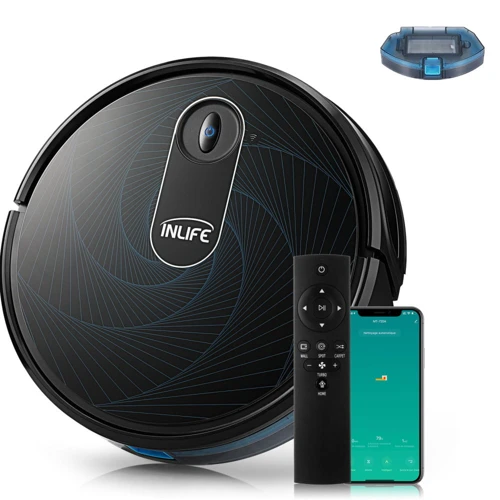
When it comes to smart vacuum cleaners, the size of their dustbin capacity plays a crucial role in determining their efficiency. While a larger dustbin capacity might seem like the obvious choice, the smaller option can prove to be just as efficient if utilized correctly. In this section, we will dive into the advantages and disadvantages of having a small dustbin capacity, as well as the factors that affect its performance. If you’re a pet owner looking for a smart vacuum cleaner, make sure to check out our article on “Selecting the Best Smart Vacuum for Pet Owners” for more information.
Advantages of Small Dustbin Capacity
One of the main advantages of a small dustbin capacity is that it makes the vacuum cleaner more lightweight and portable. This means that the vacuum can be easily carried from room to room, or up and down the stairs. Additionally, a smaller dustbin capacity can also mean that the vacuum cleaner itself is more compact, making it easier to store in tight spaces.
Another advantage of a small dustbin capacity is that it can be more budget-friendly in terms of the initial cost. Vacuum cleaners with smaller dustbin capacities are often less expensive compared to those with larger capacities. This is because a smaller dustbin requires fewer materials to manufacture and is therefore less expensive to produce.
Vacuum cleaners with a smaller dustbin capacity also require less maintenance, as they need to be emptied more frequently. Since the dustbin is smaller, it fills up quickly, prompting the user to empty it more often, thus preventing the vacuum from becoming clogged or overheating. This can also make cleaning sessions quicker, as you won’t have to stop mid-way to empty the dustbin.
However, it is important to note that a smaller dustbin capacity may be less ideal for larger homes or spaces with more frequent dirt and debris. In such cases, the small dustbin capacity may need to be emptied more frequently, which can be inconvenient for some users. Additionally, small dustbins may not be able to hold larger debris, such as small rocks or sticks, which can cause the dustbin to become clogged, potentially damaging the vacuum.
To learn more about other important factors when choosing a smart vacuum cleaner, consider reading our article on Smart Sensors in Smart Vacuum Cleaning.
Disadvantages of Small Dustbin Capacity
Small dustbin capacity can be a major drawback when it comes to the effectiveness of a smart vacuum cleaner. Here are some of the disadvantages of a small dustbin capacity:
| Disadvantages of Small Dustbin Capacity | Explanation |
|---|---|
| More Frequent Emptying Required | If the dustbin is too small, it will need to be emptied more often. This can be time-consuming and frustrating, especially if you have to stop cleaning every few minutes to empty the bin. |
| May Not Be Suitable for Larger Homes | If you have a larger home, a small dustbin capacity may not be enough to clean your entire home without needing to be emptied multiple times. This can be inconvenient and disrupt your cleaning schedule. |
| May Not Be Effective for Homes with Pets | Homes with pets tend to have more pet hair and dander, which can quickly fill up a small dustbin. This can cause the vacuum to lose suction power and become less effective. |
| May Require More Maintenance | If the dustbin is too small, it can cause debris to build up inside the vacuum, which can clog the machine and require more maintenance. This can result in additional time and money spent on repairs. |
It’s important to consider these factors when choosing the right dustbin capacity for your smart vacuum cleaner. While a smaller dustbin may be suitable for some, it may not be the best option for those with larger homes or pets. Additionally, a small dustbin capacity may require more maintenance and frequent emptying, which can be time-consuming and frustrating. To learn more about other factors that can impact the effectiveness of a smart vacuum cleaner, check out our article on smart home factors.
Large Dustbin Capacity
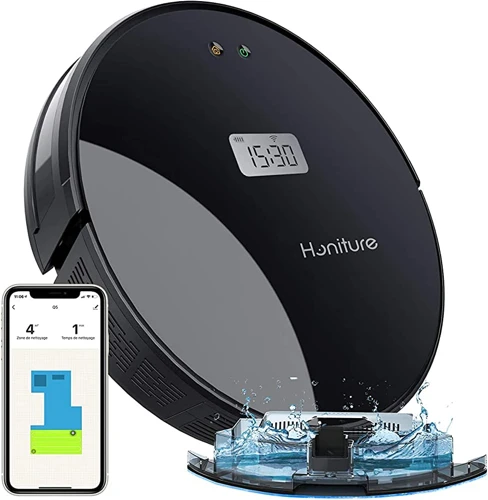
Imagine having a smart vacuum cleaner with a dustbin capacity so large that you could vacuum your entire house multiple times before needing to empty it. A large dustbin capacity not only saves time but can also improve cleaning efficiency. With a larger dustbin capacity, you can collect a significant amount of dirt and debris before you need to take a break and empty it. In this part of the article, we will explore the advantages and disadvantages of having a vacuum cleaner with a spacious dustbin. We will also look at factors that affect dustbin capacity and tips for maximizing it. Before we dive in, make sure to check out our article on smart vacuum noise level to learn how to reduce the noise level of your device.
Advantages of a Large Dustbin Capacity
A large dustbin capacity is a useful feature to have for a smart vacuum cleaner. Here are some of the advantages of using a smart vacuum cleaner with a large dustbin capacity:
- More efficient cleaning sessions: With a larger dustbin capacity, the vacuum cleaner can clean more areas without needing to stop for frequent emptying. This creates a more efficient cleaning session, as the vacuum cleaner can work for a longer period before the dustbin needs to be emptied.
- Reduced maintenance: A vacuum cleaner with a larger capacity means that there is less time spent on maintenance. You would not have to stop and empty the dustbin as often. This makes cleaning much more comfortable and allows people to get back to their daily tasks.
- Great for homes with pets: If you have pets in your home, then you understand how pesky animal hair can be. A vacuum cleaner with a larger dustbin capacity is great for picking up pet hair and minimizes the need for frequent stops to empty the dustbin. This feature is a popular among pet owners due to its ability to vacuum all pet hair and debris effectively.
- Cost-effective: A vacuum cleaner with a larger dustbin capacity is more cost-effective in the long run because you won’t need to replace the bags as often. This implies that you will save money by not buying vacuum bags as often as you would with a vacuum cleaner with a smaller dustbin capacity.
- Time-saving: A vacuum cleaner with a large dustbin capacity can save valuable time by reducing the number of stops needed for dustbin emptying. The user can clean for a more extended period without needing to stop and empty the dustbin periodically. This leaves them with more time to focus on other things.
In general, a large dustbin capacity has many advantages that make it a desirable feature for a smart vacuum cleaner. However, it is also essential to understand the possible disadvantages of having a large dustbin capacity, which will be discussed in the following section.
Disadvantages of a Large Dustbin Capacity
When it comes to a large dustbin capacity, while it does have its advantages, there are also some disadvantages to keep in mind. Let’s take a closer look at what these are:
| Disadvantages of a Large Dustbin Capacity |
|---|
| 1. Increase in vacuum cleaner size and weight: As the dustbin size increases, the vacuum cleaner’s size and weight may increase as well. This can make it difficult to maneuver the vacuum around the house and store it. |
| 2. Potential for dustbin overflow: While a large dustbin capacity allows you to clean for longer periods without having to empty it, it can also lead to overflow if not emptied in time. This can create a messy situation and potentially damage the vacuum cleaner. |
| 3. Higher maintenance requirements: A large dustbin capacity means that there’s a higher volume of dirt and debris that needs to be cleaned out, which can take more time and effort. Additionally, if the dustbin is not cleaned properly, it can harbor germs and bacteria that can cause health issues. |
| 4. Higher cost: Vacuum cleaners with large dustbin capacities can be more expensive than those with smaller capacities. This may not be a problem if you’re willing to invest in a high-quality vacuum cleaner, but it’s important to keep in mind if you’re on a budget. |
While a large dustbin capacity can be beneficial, it’s important to consider these disadvantages before making a purchase. Ultimately, the right dustbin capacity for you will depend on your individual needs and preferences.
Factors that Affect Dustbin Capacity
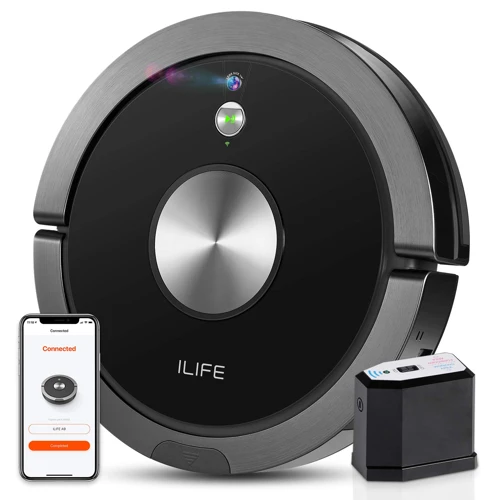
When shopping for a smart vacuum cleaner that comes equipped with a dustbin, it’s important to consider various factors that can affect the dustbin capacity. The size and weight of the vacuum cleaner, as well as the type of debris it’s designed to pick up, can have a significant impact on the amount of dust and dirt the bin can hold. To maximize the efficiency of your smart vacuum cleaner, it’s essential to take these factors into account and choose a model that’s designed to meet your specific cleaning needs. Let’s take a closer look at some of the factors that affect dustbin capacity and how they can impact your cleaning experience.
Size and Weight of Vacuum Cleaner
When it comes to the dustbin capacity of smart vacuum cleaners, the size and weight of the vacuum cleaner itself are important factors to consider. The table below highlights how the size and weight of a vacuum cleaner can impact the dustbin capacity.
| Vacuum Cleaner Size | Vacuum Cleaner Weight | Dustbin Capacity |
|---|---|---|
| Small | Lightweight | Less than 0.5L |
| Medium | Moderate weight | Between 0.5L and 1.0L |
| Large | Heavyweight | More than 1.0L |
As the table illustrates, a small and lightweight vacuum cleaner generally has a smaller dustbin capacity of less than 0.5L. On the other hand, a large and heavyweight vacuum cleaner can have a dustbin capacity of more than 1.0L.
This is because smaller vacuum cleaners have less space to accommodate a larger dustbin, while larger vacuum cleaners have more space to accommodate a larger dustbin. Additionally, larger vacuum cleaners may have stronger motors that can handle more dirt and debris, leading to a larger dustbin capacity.
It is important to note that while a larger dustbin capacity may be desirable, it can also lead to a heavier vacuum cleaner. Users who prioritize portability and ease of use may opt for a smaller vacuum cleaner with a smaller dustbin capacity, as it will be lighter and more maneuverable.
When considering the dustbin capacity of a smart vacuum cleaner, it is important to take into account the size and weight of the vacuum cleaner as these factors can impact the amount of dirt and debris that can be collected before the dustbin needs to be emptied.
Type of Dirt and Debris
The type of dirt and debris that your smart vacuum cleaner picks up during cleaning sessions can have a significant impact on its dustbin capacity. To better understand this, let’s take a closer look at how different types of dirt and debris affect the dustbin capacity of your smart vacuum cleaner.
Small debris, such as dust and tiny crumbs, may not take up much space in the dustbin, allowing for longer cleaning sessions before needing to empty the bin. However, if your vacuum cleaner is picking up a lot of small debris, it may need to be emptied more frequently, as the dustbin can quickly fill up.
On the other hand, large debris, such as leaves, pet hair, or food particles, can take up a significant amount of space in the dustbin. This means that your vacuum cleaner’s cleaning sessions may be limited, and the dustbin may need to be emptied more frequently than if it were picking up only small debris.
Wet or sticky debris, like spilled drinks or food remnants, can also impact the dustbin capacity of your smart vacuum cleaner. Wet debris can clump together, clogging the dustbin and reducing its overall capacity. This can also cause the vacuum cleaner to lose suction power, making it less effective at picking up both wet and dry debris.
To better understand how different types of debris can affect your smart vacuum cleaner’s dustbin capacity, refer to the following table:
| Debris Type | Effect on Dustbin Capacity |
|---|---|
| Small Debris (dust, crumbs) | Takes up less space but may require more frequent dustbin emptying |
| Large Debris (leaves, pet hair, food particles) | Takes up more space, limiting cleaning sessions and requiring more frequent dustbin emptying |
| Wet or Sticky Debris (spilled drinks, food remnants) | Can clump together, clogging the dustbin and reducing suction power |
Keeping these different types of debris in mind and being aware of how they affect your smart vacuum cleaner’s dustbin capacity can help you make informed decisions when selecting the right vacuum cleaner for your home or when adjusting its settings for optimal cleaning.
Tips to Maximize Dustbin Capacity
Now that you understand how dustbin capacity affects the cleaning performance of smart vacuum cleaners and the advantages and disadvantages of both small and large dustbin capacity, it’s time to learn how to make the most out of your vacuum’s capacity. Maximizing dustbin capacity is crucial if you want your vacuum cleaner to work efficiently and effectively. With that in mind, we’ve compiled a list of tips for you to follow to maximize the dustbin capacity of your smart vacuum cleaner. By implementing these tips, you’ll be able to extend the time between emptying the dustbin, saving you time and effort in the long run. Let’s get started!
Empty the Dustbin Regularly
Maintaining your smart vacuum cleaner’s dustbin regularly is essential in ensuring it operates efficiently. The frequency of emptying the dustbin depends on the capacity and dirt capacity of your device. It can also depend on your daily activities in your home. If you have a large family or pets, it’s best to empty the dustbin regularly.
How Often Should You Empty the Dustbin?
There are several factors that determine the frequency of emptying the dustbin. For instance, if you have a relatively small dustbin capacity and have a lot of debris and dirt to clean, you may need to empty it more often than a device with a large dustbin capacity. Here are the main factors you should consider:
| Factors to Consider | Frequency of Emptying the Dustbin |
|---|---|
| The size of your home | 1-2 times a week |
| The number of people in your home | 1-2 times a week |
| The presence of pets | 2-3 times a week |
| High traffic areas | 2-3 times a week |
Why is it important to empty the dustbin regularly?
Leaving the dustbin full may cause your vacuum cleaner to underperform. It will reduce the suction power of your device; thus, it may fail to pick up debris and dirt from your floors effectively. It can also cause dust and debris to waft back into the air, reducing air quality in your home.
How to empty the dustbin?
The process of emptying the dustbin is straightforward for most smart vacuum cleaners. Most models have a release latch that allows you to detach it from the device. From there, you can empty the collected dirt and debris into a bin or trash can. Ensure that you remove any clogs or tangled debris from the brushes to keep the vacuum cleaner operating efficiently. Lastly, it is crucial to clean or replace the filter regularly, depending on the manufacturer’s instructions, to prevent dust and dirt from entering the motor.
By Emptying the dustbin regularly, you can enhance the performance of your smart vacuum cleaner and prolong its life. Make sure to follow the manufacturer’s instructions and tips above to get the most out of your device.
Choose the Right Vacuum Setting
When it comes to maximizing the dustbin capacity of your smart vacuum cleaner, choosing the right vacuum setting can make a huge difference. Here are some tips to help you choose the right setting for your cleaning needs:
- Consider the Surface: Different surfaces require different vacuum settings. For example, if you’re cleaning hardwood floors, a low suction setting may be all that’s needed to pick up dust and debris without scattering it around. On the other hand, if you’re cleaning a thick carpet, a higher suction setting may be necessary to pick up embedded dirt and pet hair.
- Adjust for Debris Type: The type of debris you’re trying to clean up can also affect the vacuum setting you use. For instance, larger pieces of debris like cereal or leaves may require a higher suction setting, while smaller particles like dust and pollen may require a lower setting.
- Take it Slow: Regardless of the surface or debris type, vacuuming slowly and methodically can help you get the most out of your dustbin. Rushing through the cleaning process can cause dust and debris to scatter, requiring more passes and filling up the dustbin more quickly.
- Experiment with Settings: Don’t be afraid to experiment with different vacuum settings to find the one that works best for you. Try starting with a low suction setting and working your way up until you find the ideal setting for your cleaning needs.
By choosing the right vacuum setting for your cleaning needs, you can not only maximize your dustbin capacity but also improve the overall cleaning performance of your smart vacuum cleaner. So, take the time to consider the surface, debris type, and speed of your vacuuming to ensure you’re getting the most out of your cleaning sessions.
Conclusion
In conclusion, dustbin capacity is an important factor to consider when choosing a smart vacuum cleaner. It directly affects the cleaning performance and the convenience of owning a smart vacuum cleaner. Having a larger dustbin capacity provides more convenience in terms of cleaning as it minimizes the need for emptying the bin frequently. However, it also increases the weight of the vacuum cleaner and can make it difficult to maneuver in tight spaces.
On the other hand, a relatively smaller dustbin capacity can create some problems in terms of cleaning large areas. One would have to empty the bin frequently to maximize the cleaning capabilities of the vacuum cleaner, which can be a nuisance over time.
Therefore, before purchasing a smart vacuum cleaner, one should take into account their cleaning needs, the size of their home, and the type of debris they expect to clean. It is also important to note that in some cases, a lower dustbin capacity may not be a deal-breaker if the cleaning performance of the vacuum cleaner is exceptional.
To maximize the dustbin capacity of any vacuum cleaner, it is important to empty the bin regularly and choose the right vacuum setting for each cleaning session. By doing so, one can ensure that their smart vacuum cleaner is performing at its optimal level without any hiccups.
In summary, when it comes to smart vacuum cleaners, dustbin capacity plays a significant role in determining how well it can perform, how long it can clean for, and how easy it is to use. Therefore, one should consider all the factors discussed in this article before making a purchase decision.
Frequently Asked Questions
How does dustbin capacity affect the cleaning ability of a smart vacuum cleaner?
Dustbin capacity affects the cleaning ability of a smart vacuum cleaner by determining how much dirt and debris it can pick up before needing to be emptied.
What is the optimal dustbin capacity for a smart vacuum cleaner?
The optimal dustbin capacity for a smart vacuum cleaner depends on the size of the space being cleaned and how frequently the cleaning sessions occur. Generally, a larger space and less frequent cleaning sessions will require a larger dustbin capacity.
What is the difference between a small and large dustbin capacity?
A small dustbin capacity typically holds less than 0.5 liters of dirt and debris, while a large dustbin capacity can hold more than 1 liter.
Is a larger dustbin capacity always better than a smaller one?
Not necessarily. A larger dustbin capacity may be beneficial for larger spaces or less frequent cleaning sessions, but it can also make the vacuum cleaner heavier and harder to maneuver. Additionally, a small dustbin capacity may be more suitable for spot cleaning or smaller spaces.
What are the advantages of a small dustbin capacity?
Smaller dustbin capacities are generally lighter and more compact, making them easier to maneuver and store. They are also more suitable for spot cleaning and smaller spaces.
What are the disadvantages of a small dustbin capacity?
A small dustbin capacity may need to be emptied more frequently, which can be inconvenient and time-consuming. It can also limit the amount of dirt and debris that can be picked up during a cleaning session.
What are the advantages of a large dustbin capacity?
Large dustbin capacities require less frequent emptying, which can be convenient for larger spaces and less frequent cleaning sessions. They can also hold more dirt and debris, making them more efficient for deep cleaning.
What are the disadvantages of a large dustbin capacity?
Large dustbin capacities can make the vacuum cleaner heavier and harder to maneuver. They are also more suitable for larger spaces and may be unnecessary for spot cleaning or smaller spaces.
What factors affect dustbin capacity?
The size and weight of the vacuum cleaner, as well as the type and amount of dirt and debris being picked up, can affect dustbin capacity.
How can I maximize the dustbin capacity of my smart vacuum cleaner?
To maximize the dustbin capacity of your smart vacuum cleaner, make sure to empty it regularly and choose the right vacuum setting for the type and amount of dirt and debris being picked up.
